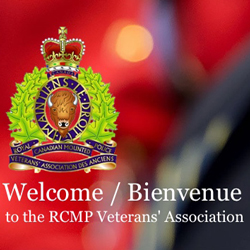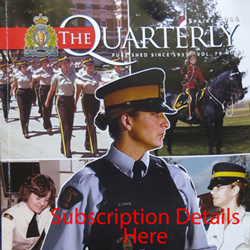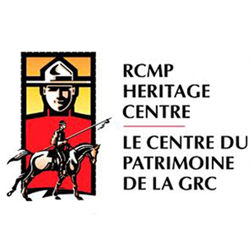Who Created the NWMP?
THE VETERAN SOLDIER WHOSE IDEA WAS TO CREATE THE NORTH-WEST MOUNTED POLICE
On May 23, 1873, the Act of Parliament that would lead to the establishment of the North-West Mounted Police was given Royal Assent by the Governor-General of Canada.
But whose idea was it to create such a police force in the first place?
This would be Colonel Patrick Robertson-Ross, the Scottish-born veteran of the Crimean War who in 1869 was appointed Adjutant-General of the Militia of the newly-created Dominion of Canada.
During the summer of 1872, Colonel Robertson-Ross was ordered by the Prime Minister Sir John A. Macdonald to conduct a reconnaissance of the Canadian north-west to determine the need for a military force in Manitoba and westward.
Colonel Robertson-Ross’s annual report for 1872 provided a detailed account of the state of the militia, including a description of his overland journey to British Columbia, traveling on Canadian soil and accompanied only by his 16-year-old son and a few guides.
At Fort Garry [present-day Winnipeg, Manitoba] he arranged for the militia uniform to be changed from green to red as a reassurance to the indigenous peoples who had trusted the British regulars.
He commented on the problems created by whisky smuggling and horse stealing and recommended a force of 550 soldiers as well as a chain of military posts for the territories rather than just a civil police force.
What happened next is described by A. L. Haydon in his 1911 book “The Riders of the Plains”.
“In his report to the Government, Colonel Robertson-Ross had particularised the nature of the Force the which he considered essential to the security of the north-west.
A large military body, as he said, was not required.
Comparatively small detachments of “well-armed and disciplined men, judiciously posted throughout the country,” were all that were needed to maintain military supremacy.
With this in view he recommended the establishment of posts at various points, each to be garrisoned with from fifty to a hundred mounted riflemen.
“I would further observe that no time should be lost in making the preliminary arrangements. The men and horses should, if possible, be concentrated at Fort Garry in the month of May or June, their equipment forwarded sooner, and the companies dispatched without delay.”
Early in 1873 the Dominion Parliament at Ottawa began to discuss the situation seriously.
In May, Sir John Macdonald, who had formulated his own scheme from the suggestions offered by the Adjutant-General, gave notice that he intended to introduce a bill respecting “the administration of justice and the establishment of a police force in the North-West Territories.”
Under the provisions of this Act the new force would consist of a Commissioner, as many Superintendents as were deemed desirable, a paymaster, veterinary surgeon, and sergeants, with constables and sub-constables, to a number not exceeding three hundred.
All were to be mounted and efficiently equipped, and, above all, there was to be no ostentatious display.
“As little gold lace and fuss and feathers as possible,” were Sir John’s words.
He wanted a plain, working, mobile force, suited to the conditions of the country – a force, in short, of well-trained, hard-bitten men, all good riders and good marksmen.
In effect, the North-West Mounted Police was to be purely a civil force, like the Royal Irish Constabulary, drilled in simple movements taken from the British cavalry regulations, and its interior economy was to be conducted much upon the system of a regular cavalry regiment.
It was not to be subject to the Queen’s regulations and articles of war, but discipline was to be enforced by virtue of the powers conferred upon certain officers by a very concise and comprehensive section contained in the statute, which provides a maximum punishment of six months’ imprisonment with hard labour and the deprivation of one month’s pay.
One of the sections of the Act ran thus: “No person shall be appointed to the Police Force unless he be of sound constitution, able to ride, active and able-bodied, of good character, and between the ages of eighteen and forty years; nor unless he be able to read and write either the English or French language.”
Mark Gaillard
Historian
RCMP Veterans’ Association


 May 25, 2020
May 25, 2020 






